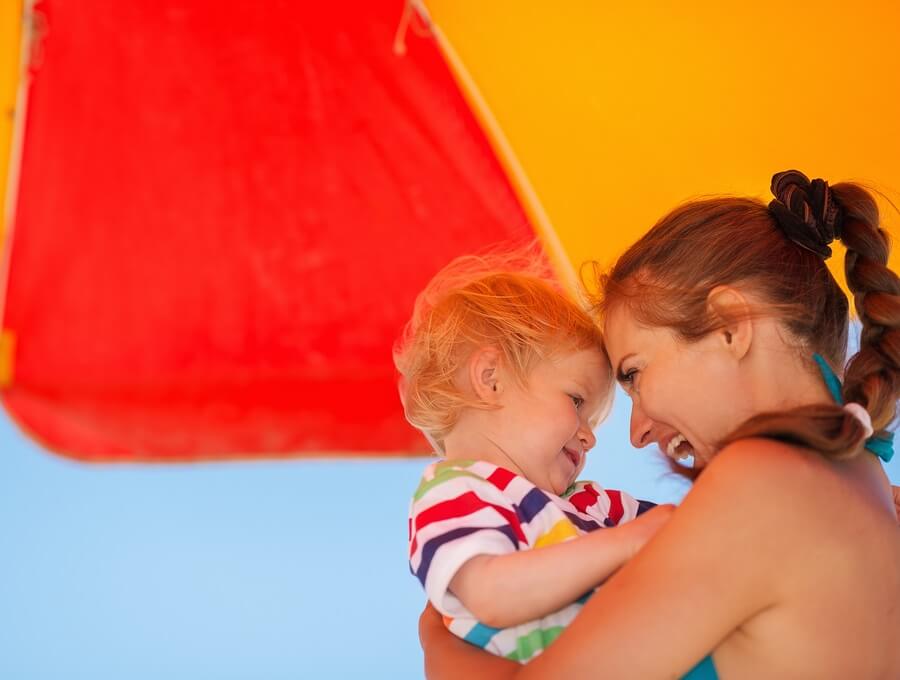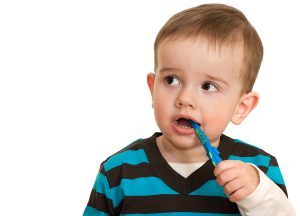

Not all umbrellas and canopies protect against all UVA and UVB rays — in fact, some reduce exposure by only about 50 percent. Use caution when using these as your baby’s means of shade. It’s also important to remember that your baby can get a burn even on cloudy days, since the sun’s rays can penetrate cloud cover, and bounce off reflective surfaces like snow, water, sand, and cement.
Buy an umbrella on Amazon.
Buy a stroller cover on Amazon.

Also, dress your baby in UV-blocking sunglasses and a hat with at least a four inch brim to help shield her eyes, face, ears, and neck from harmful rays.
Buy sun-protective clothing on Amazon.
Buy baby sunglasses on Amazon.
Buy a sun protection hat on Amazon.

Buy mesh shields on Amazon.

For babies older than six months, sunscreen can be applied all over the body, but be careful around the eyes. If your child wipes sunscreen into her eyes, wipe her eyes and hands clean with a damp cloth. Remember to use chemical-free sunscreens that contain titanium dioxide or zinc oxide, and if a rash develops, talk to your child’s doctor.

If your baby is over a year old and the burn appears mild, you can treat it at home. A mild burn causes warm, red, and painful skin, and the first 24 hours are usually the most painful. Apply cold compresses to the affected areas, or bathe your child in cool water. The AAP approves of using acetaminophen for pain relief — just be sure to follow the appropriate dosage directions for your child’s height and weight. Make sure your child drinks plenty of fluids so she stays hydrated.
If your child’s burn causes blisters, fever, chills, headache, or any general feelings of illness, call her doctor.





